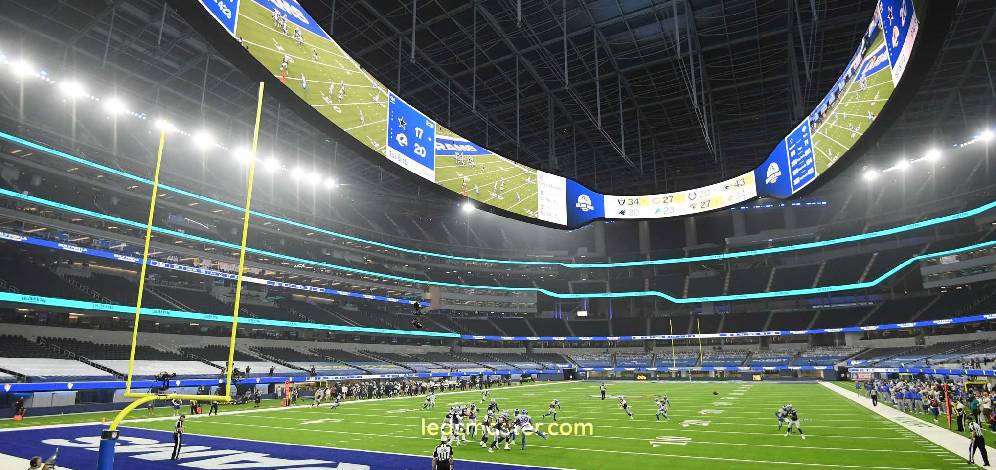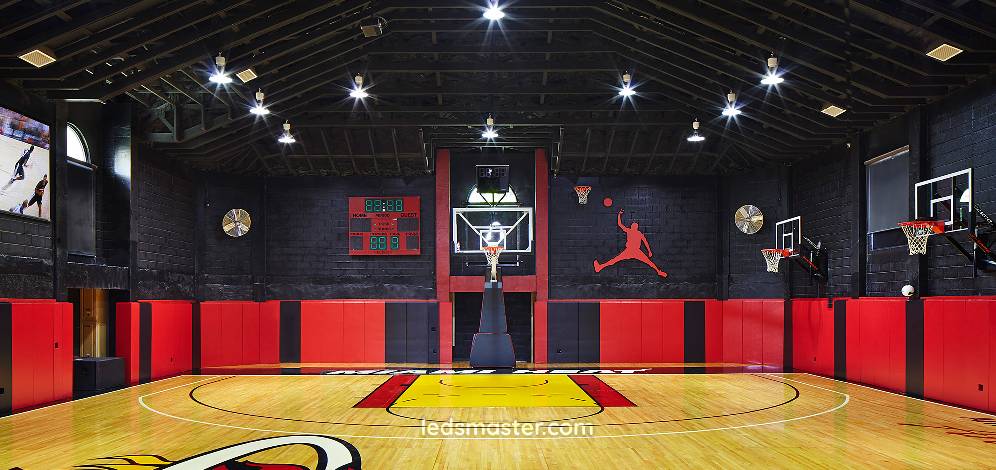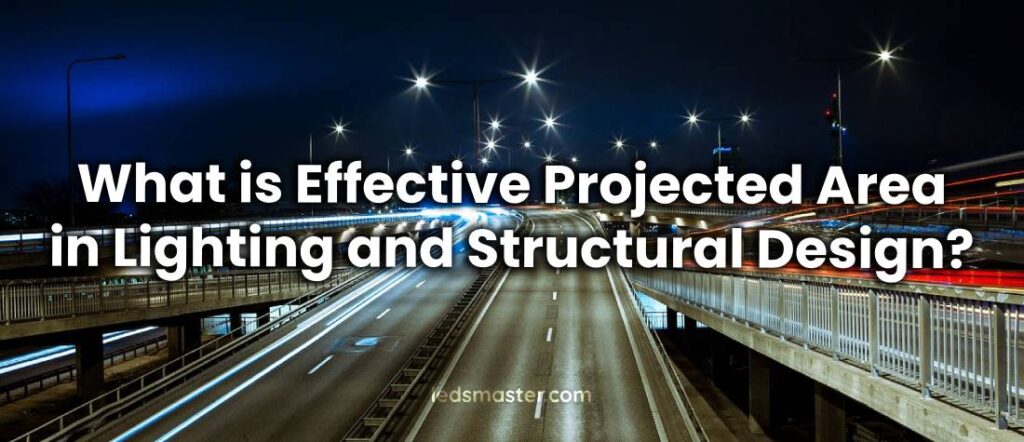The concept of effective projected area refers to the area of a surface or structure that affects the light distribution and structural load calculations. Understanding the effective projected area is essential for optimizing lighting performance and ensuring structural integrity. This article explores the definition, impact, and considerations related to effective projected area in lighting and structural design.
Table of Contents
ToggleDefinition of Effective Projected Area
Effective projected area is defined as the apparent area of a surface or structure as it interacts with light or load forces when viewed from a specific angle. In lighting design, it refers to the area that contributes to light distribution, while in structural design, it pertains to the area that impacts load distribution. This concept is pivotal for accurately calculating lighting requirements and structural support.
Effective Projected Area in Lighting Design
In lighting design, effective projected area helps determine how light fixtures will distribute light across a space. For example, in outdoor lighting, the effective projected area of a billboard or signage affects how light will illuminate the surface and whether it will create glare or shadows. The size and shape of the projected area impact the uniformity of light distribution and overall visibility.
Effective Projected Area in Structural Design
In structural design, effective projected area is critical for calculating the impact of wind, snow, or other environmental loads on a building or structure. The projected area of a building facade or roof determines the amount of pressure the structure will experience. Accurate calculations of this area are essential for designing structural elements that can withstand these forces without compromising safety.

Impact of Effective Projected Area
Understanding the impact of effective projected area is vital for both lighting efficiency and structural stability. In lighting design, this concept influences how effectively light fixtures can illuminate a space and how evenly light is distributed. In structural design, it affects how loads are distributed across a structure and informs decisions about material strength and structural support.
Impact on Lighting Performance
The effective projected area directly influences the performance of lighting systems by affecting how light is distributed and how fixtures are utilized. In lighting design, the effective projected area of various elements, such as street signs, billboards, or architectural features, determines how well these objects are illuminated. For example, in street lighting, the effective projected area of street signs influences how much light reaches the sign and how well it is visible to drivers and pedestrians. If the effective projected area is not accurately accounted for, it can lead to insufficient illumination, creating areas of poor visibility and potentially increasing the risk of accidents.
An effectively designed lighting system takes the projected area into account to ensure that light is distributed uniformly across the intended area. This means that light fixtures are placed and angled to cover the entire projected area adequately, minimizing shadows and reducing glare. Proper management of the effective projected area not only improves visibility but also enhances the overall aesthetic appeal of the space. For instance, in outdoor public spaces like parks or plazas, the effective projected area of pathways and amenities must be considered to achieve a balanced and visually pleasing lighting design.
Impact on Structural Integrity
In structural design, the effective projected area is a key factor in calculating how loads, such as wind, snow, or other environmental forces, are distributed across a structure. The projected area of a building’s facade or roof determines the amount of pressure that the structure will experience from these forces. For example, a large facade or roof with a substantial effective projected area will encounter greater wind loads compared to a smaller area. Engineers must accurately calculate these loads to ensure that the structural components, such as beams, columns, and supports, are designed to withstand the pressures imposed on them.
Understanding the effective projected area allows for the design of structures that are not only capable of supporting these loads but also resilient to potential failures. For instance, in buildings exposed to high winds, the effective projected area helps engineers determine the need for additional reinforcements or specialized materials to handle the increased load. This consideration is essential for maintaining the safety and longevity of the structure. By accounting for the projected area in structural design, engineers can prevent issues such as deformation, cracking, or even catastrophic structural failures, ensuring that buildings remain safe and functional throughout their lifespan.

Considerations in Lighting Design
Incorporating the concept of effective projected area into lighting design involves several critical considerations to ensure that the lighting system performs optimally. This includes addressing factors such as light distribution, glare control, and energy efficiency.
Light Distribution and Uniformity
The effective projected area plays a pivotal role in determining how light is distributed across a surface. Designers need to account for the size and shape of this area to achieve uniform illumination. For example, when designing lighting for a sports field, the effective projected area encompasses the entire playing surface, including the field’s dimensions and any surrounding areas. This area must be adequately covered to ensure even lighting throughout the field. The goal is to eliminate dark spots and shadows that can affect visibility and performance.
In practical terms, achieving uniform light distribution involves carefully positioning and angling light fixtures. Designers might use multiple light sources with varying beam angles to cover the projected area effectively. For instance, in an outdoor sports facility, high-intensity floodlights might be arranged around the perimeter to ensure that every part of the field receives consistent illumination. This approach helps in creating a visually balanced environment where players and spectators can see clearly, enhancing both safety and enjoyment.
Glare Control
Glare control is another crucial consideration when incorporating the effective projected area into lighting design. Glare occurs when light sources produce excessive brightness that interferes with visibility and comfort. In environments where glare can be problematic, such as offices, retail spaces, or public areas, managing the projected area of light sources becomes essential to prevent discomfort and distractions.
To mitigate glare, designers often use diffusers or screens that scatter light and reduce its intensity. Additionally, the angle and placement of light fixtures can be adjusted to direct light away from areas where it might cause discomfort or impair visibility. For instance, in an office setting, overhead lights might be equipped with anti-glare diffusers to ensure that the effective projected area of each light fixture does not produce harsh reflections on computer screens or work surfaces. This careful management of glare enhances visual comfort and productivity.
Energy Efficiency
Incorporating the concept of effective projected area into lighting design can significantly improve energy efficiency. By optimizing how light is distributed based on the projected area, designers can achieve the desired illumination levels with fewer fixtures. This reduces the overall energy consumption of the lighting system and lowers operating costs.
For example, in a warehouse or large retail space, understanding the effective projected area allows designers to place fewer high-efficiency LED fixtures strategically rather than relying on numerous lower-efficiency lights. This not only saves energy but also reduces maintenance needs and extends the lifespan of the lighting equipment. Additionally, energy-efficient lighting solutions, such as LEDs, can be integrated with smart controls and sensors that adjust light levels based on occupancy or daylight availability, further enhancing energy savings and contributing to sustainability.
Considerations in Structural Design
Load Distribution
The effective projected area is pivotal in understanding how loads are distributed across a structure. This concept helps determine the extent of pressure or force that different parts of the structure will experience. For instance, when designing a roof to withstand snow loads, engineers need to calculate the effective projected area of the roof. This calculation involves considering the roof’s total surface area and its exposure to snow accumulation. The effective projected area informs how much snow the roof can support without risk of collapse or structural failure.
Accurate load distribution calculations are critical for preventing potential structural failures. For example, if a roof’s projected area is underestimated, it could lead to inadequate support, resulting in dangerous conditions such as sagging or collapse under heavy snow. By accurately assessing the effective projected area, engineers can design roofs and other structural components to handle the expected loads, ensuring the safety and stability of the building.
Material Strength and Structural Support
Understanding the effective projected area also influences decisions about material strength and the need for structural supports. A building with a large projected area exposed to wind, for instance, experiences significant wind pressure. Engineers must account for this pressure when selecting materials and designing structural elements to ensure that they can safely bear the loads.
For example, tall buildings or structures with extensive facades require materials with high strength and durability to resist wind loads. Additionally, such structures may need additional reinforcements, such as bracing or increased column sizes, to handle the increased pressure. Properly understanding and incorporating the effective projected area into the design process helps ensure that components such as beams, columns, and supports are appropriately sized and reinforced. This prevents structural issues such as deformation, excessive movement, or failure.
Building Codes and Standards
Compliance with building codes and standards is another critical aspect of incorporating effective projected area into structural design. Building codes often reference the effective projected area when specifying load requirements and design criteria for various structural elements. These codes ensure that structures are designed to meet safety standards and can withstand expected loads.
For example, codes may specify the maximum allowable wind load for a building based on its effective projected area, guiding engineers in designing safe and compliant structures. Adhering to these guidelines not only ensures that the structure is legally compliant but also that it maintains a high level of safety and performance. Engineers must stay updated with relevant codes and regulations and apply them appropriately to their designs.
Practical Applications of Effective Projected Area
Lighting Design Applications
Commercial and Residential Buildings
Understanding the effective projected area is essential for optimizing lighting in both commercial and residential settings. In commercial buildings, such as office complexes and retail spaces, the effective projected area of large glass facades and intricate architectural features impacts how indoor lighting is designed. For instance, the size and angle of windows affect natural light entry, necessitating careful placement of artificial lighting to ensure uniform illumination. In residential buildings, effective projected area considerations can influence the placement and intensity of lighting fixtures to enhance comfort and functionality while minimizing energy consumption.
Public Spaces
Effective projected area plays a crucial role in designing lighting for public spaces, including parks, plazas, and urban streetscapes. For example, in a park, the effective projected area of pathways, sculptures, and recreational areas must be evaluated to provide adequate illumination while ensuring safety and aesthetic appeal. Planners use this concept to balance light levels, avoiding overly bright spots and shadows that could detract from the environment or create safety hazards. By considering the effective projected area, designers can create inviting and functional outdoor spaces that serve the community effectively.
Structural Design Applications
Bridges and Overpasses
In structural design, the effective projected area is vital for calculating the impact of environmental forces on bridges and overpasses. The projected area of a bridge deck or an overpass determines how much wind pressure or other forces the structure will experience. Accurate assessment of this area allows engineers to design structures that can withstand these forces, ensuring stability and safety. For instance, a bridge with a large effective projected area might require additional reinforcement to handle higher wind loads, preventing structural failures and ensuring long-term durability.
Towers and Tall Structures
The design of towers and tall structures, such as communication towers and skyscrapers, heavily relies on the concept of effective projected area. The projected area of these structures influences their exposure to wind and other environmental loads. Engineers must calculate this area meticulously to ensure that the structural components can support the forces acting on them. For example, skyscrapers with extensive facades exposed to strong winds need carefully designed supports and reinforcements to maintain structural integrity. Understanding the effective projected area helps in designing these tall structures to remain safe and stable under various environmental conditions.
Conclusion
The concept of effective projected area is integral to both lighting and structural design, serving as a key factor in optimizing performance and ensuring safety. In lighting design, it influences how light is distributed, impacting visibility, glare control, and energy efficiency. For structural design, it affects load distribution, material strength, and adherence to building codes. By understanding and applying the principles of effective projected area, designers and engineers can achieve enhanced functionality and safety, whether illuminating a space or constructing resilient structures. This holistic approach ensures that both lighting systems and buildings are well-designed to meet their specific demands and conditions.

